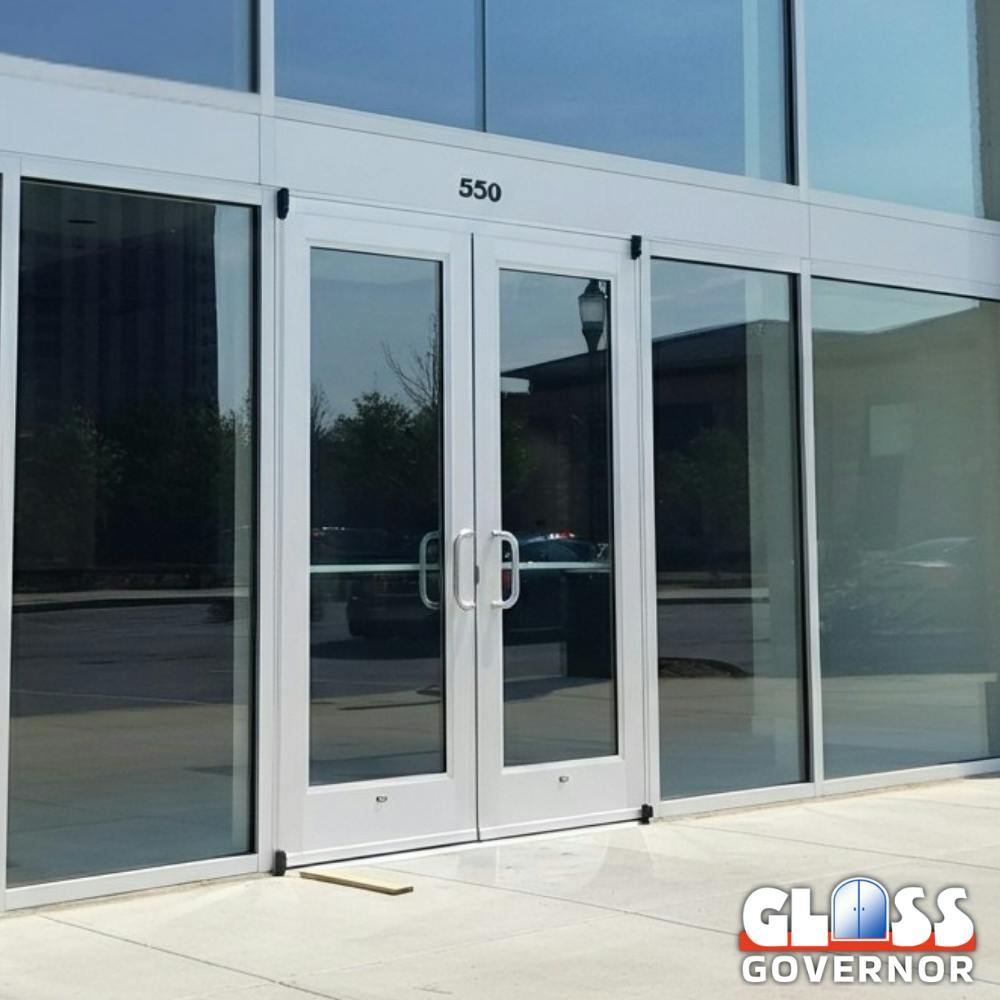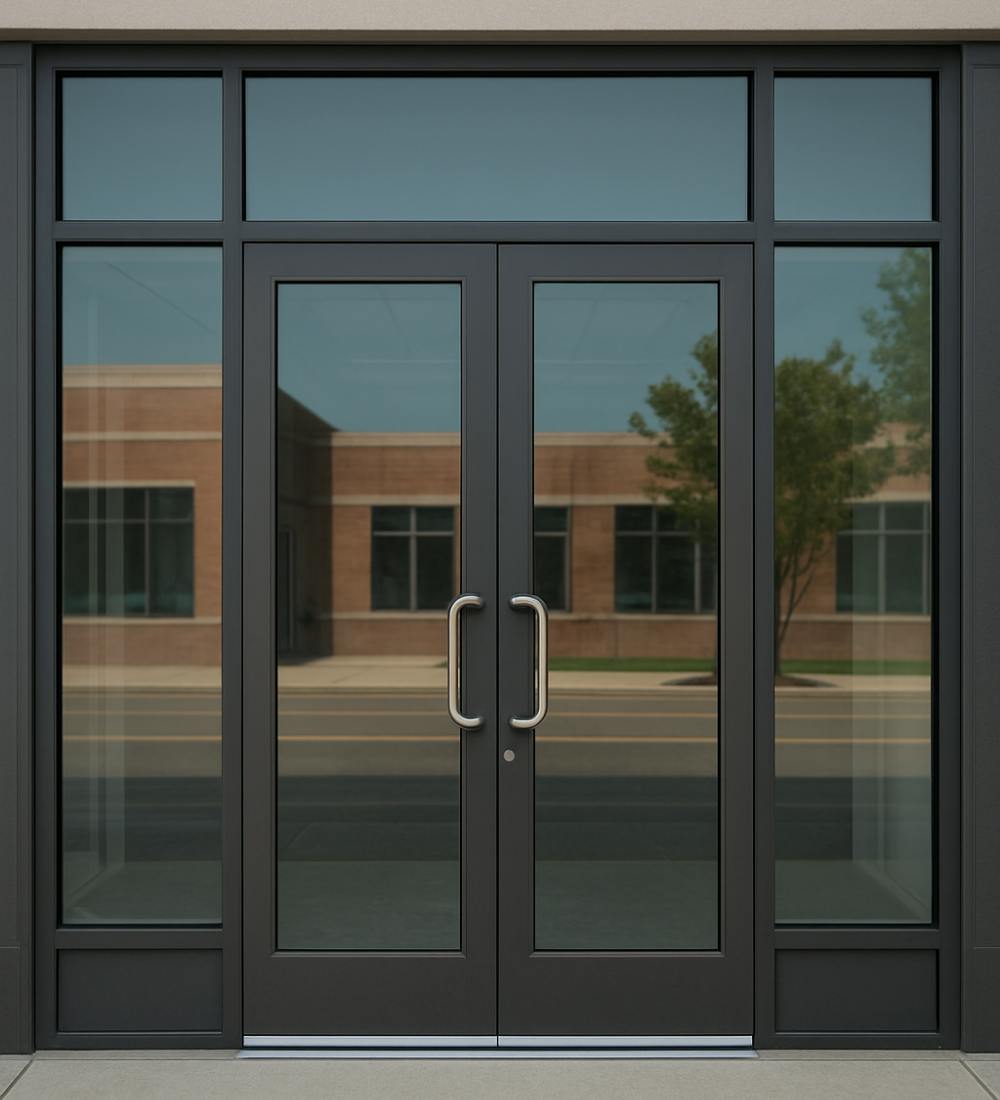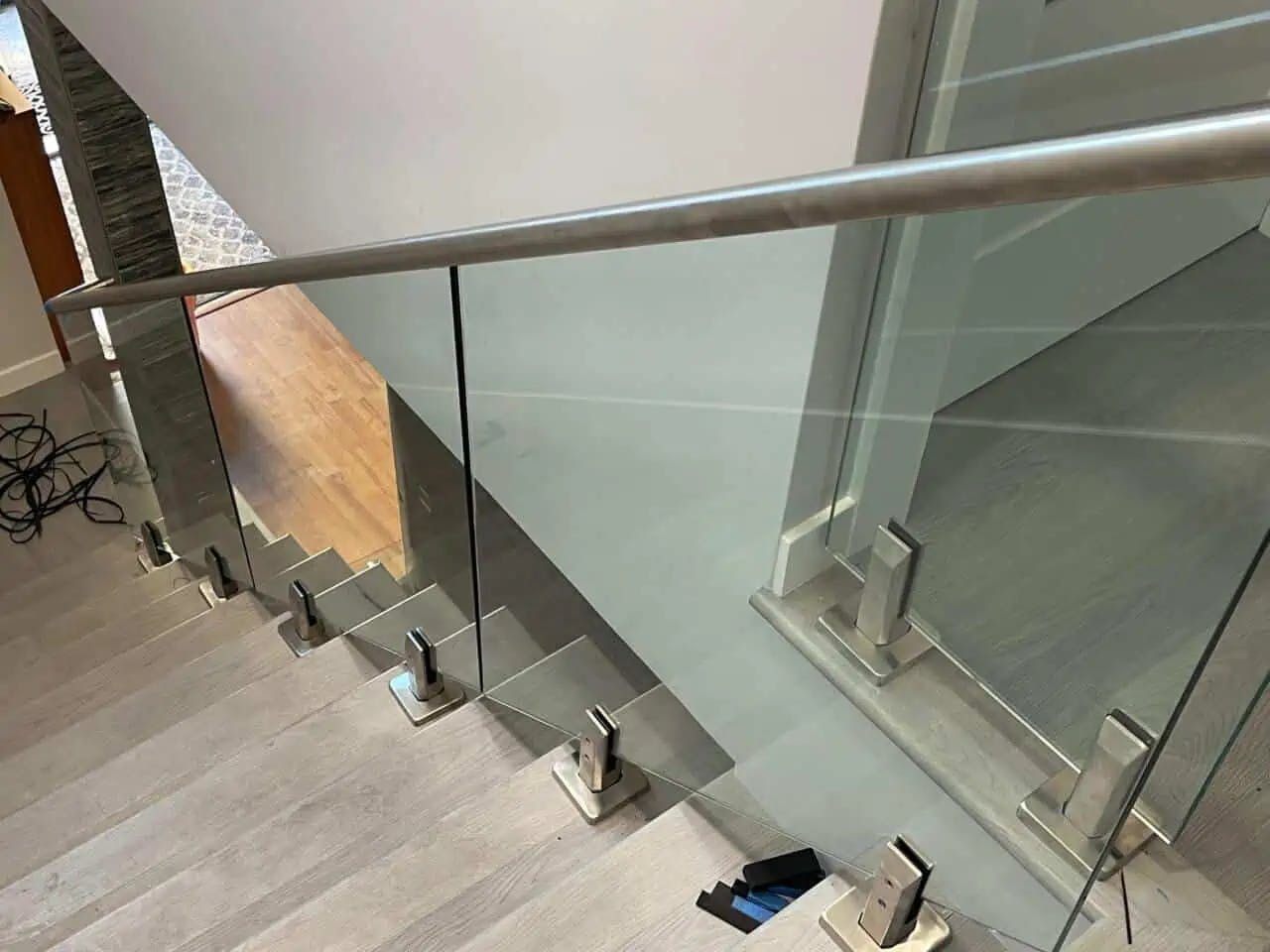Why the “floating glass” look is becoming the gold standard for modern homes and businesses
Picture this: You walk into a space and immediately feel like you can breathe easier. The room seems larger, brighter, and more open than it actually is. Natural light flows freely, and your eyes can travel unobstructed from one end of the space to the other. This isn’t magic—it’s the power of frameless glass railings, and they’re absolutely dominating the design world in 2025.
If you’ve been wondering why everyone from luxury hotels to modern homes is embracing this sleek, minimalist approach to safety barriers, you’re not alone. The shift toward frameless glass railings represents more than just a trend—it’s a fundamental change in how we think about space, light, and modern living. Let’s dive into why this “floating glass” phenomenon is capturing hearts (and budgets) across Atlanta and beyond.
What Makes Frameless Glass Railings So Special?
Think of traditional railings like heavy winter coats—they do their job, but they’re bulky, obvious, and can make you feel restricted. Frameless glass railings are like that perfect lightweight jacket that keeps you safe without weighing you down or blocking your view.
The magic lies in what’s not there. Traditional railings rely on chunky metal frames, visible bolts, and bulky hardware that can make even the most beautiful space feel chopped up and closed in. Frameless systems eliminate virtually all of this visual clutter through ingenious engineering that hides the structural elements while maintaining complete safety.
The result? What designers call the “floating glass” effect—crystal-clear barriers that seem to hover in place, creating safety boundaries without creating visual ones. It’s like having an invisible force field that protects without imposing.
Here’s what makes them work: These systems use tempered safety glass—the same ultra-strong material used in car windshields—combined with concealed anchoring systems or minimal posts that do their job without stealing the show. The glass panels are typically 10-12mm thick, providing serious structural integrity while remaining completely transparent.
This approach has become so popular that it’s now the go-to choice for everything from residential decks and staircases to commercial lobbies and rooftop terraces. The versatility is incredible—frameless glass railings work equally well in a minimalist modern home, a rustic farmhouse, or a sleek downtown office building.
The Matte Black Hardware Revolution
While the glass steals the spotlight, there’s a supporting actor that’s making waves in 2025: matte black hardware. This isn’t just about following color trends—it’s about creating visual drama and solving practical problems at the same time.
The contrast factor is everything. When you pair crystal-clear glass with deep, rich matte black posts or minimal hardware, you create a striking visual tension that elevates the entire design. It’s like wearing a crisp white shirt with a perfectly tailored black jacket—the contrast makes both elements look more sophisticated.
But matte black isn’t just pretty to look at. It’s incredibly practical for busy households and commercial spaces. Unlike shiny finishes that show every fingerprint and smudge, matte black hardware is naturally forgiving. Kids can grab the railings, employees can lean against them, and maintenance staff can clean around them without constantly worrying about maintaining that perfect shine.
The style versatility is remarkable. Matte black hardware works beautifully in contexts you might not expect. In a modern industrial loft, it reinforces the urban aesthetic. In a farmhouse setting, it provides contemporary contrast without clashing with rustic elements. In a traditional home, it adds a sophisticated modern touch that feels fresh rather than jarring.
For commercial applications, matte black hardware has become particularly popular because it photographs well, ages gracefully, and maintains its sophisticated appearance even in high-traffic environments. Hotels, restaurants, and office buildings are embracing this combination because it creates an upscale impression that lasts.
Smart Glass Technology: The Future Is Already Here
Just when you thought frameless glass railings couldn’t get any more impressive, technology stepped in to make them even more functional. Smart glass railings are beginning to appear in high-end residential and commercial projects, offering capabilities that would have seemed like science fiction just a few years ago.
Switchable privacy glass is perhaps the most exciting development. Imagine hosting a dinner party where your balcony railing provides an open view during cocktails, then switches to frosted privacy mode when you want to create a more intimate atmosphere. This isn’t theoretical—it’s happening right now in luxury homes and upscale restaurants.
The technology works through electrical stimulation that changes the glass’s molecular structure, shifting it from transparent to opaque in seconds. For businesses, this means conference rooms with railings that can provide privacy during sensitive meetings, then open up for collaborative work sessions.
Integrated LED lighting is another game-changer. These systems embed customizable lighting directly into the railing structure, providing ambient illumination, safety lighting, or even branded lighting effects for commercial spaces. A hotel might use warm white lighting for evening ambiance, while a tech company might incorporate their brand colors into the railing lighting system.
The practical benefits extend beyond the “wow factor.” Smart glass railings can reduce energy costs by managing natural light throughout the day, improve security by providing controlled visibility, and enhance user experience by adapting to different needs and times of day.
Why Commercial Spaces Are Going All-In
If you’ve noticed that every impressive new hotel lobby, office building, or retail space seems to feature stunning glass railings, you’re not imagining things. Commercial spaces are embracing frameless glass railings because they solve multiple business challenges simultaneously.
First impressions matter enormously in commercial settings. When potential clients, customers, or partners walk into a space with sleek, modern glass railings, they immediately perceive quality, attention to detail, and forward-thinking design. It’s like wearing a custom-tailored suit to an important meeting—the impression is immediate and lasting.
The spatial benefits are crucial for commercial success. Retail spaces use frameless glass railings to create defined areas without blocking sightlines, allowing customers to see merchandise and navigate naturally. Office buildings use them to create safe mezzanines and walkways that don’t make employees feel boxed in. Hotels use them to create dramatic lobbies and terraces that photograph beautifully for social media marketing.
Natural light optimization directly impacts operating costs. By maximizing daylight penetration, glass railings reduce reliance on artificial lighting, leading to lower energy bills and more comfortable working conditions. Studies show that employees in naturally lit environments are more productive and report higher job satisfaction.
The maintenance factor is particularly important for commercial properties. Glass and matte black finishes are both easy to clean and resistant to wear, which matters when you’re dealing with hundreds or thousands of people using the space daily. Traditional railings might need frequent painting, part replacement, or intensive cleaning, but well-designed glass systems require minimal maintenance.
Installation and Practical Considerations
While frameless glass railings look effortless, the installation process requires expertise and precision. The beauty of these systems lies in their engineering—every measurement must be exact, every anchor point must be perfectly positioned, and every safety requirement must be met while maintaining the clean, minimalist aesthetic.
Professional installation is non-negotiable. These aren’t DIY projects. The structural engineering required to support glass panels safely while hiding the support systems demands specialized knowledge and equipment. A qualified installer will evaluate your specific space, local building codes, and usage requirements to design a system that’s both beautiful and completely safe.
The investment varies significantly based on scope and complexity. Simple deck railings might cost $200-400 per linear foot, while complex commercial installations with custom features can run $500-1000+ per linear foot. However, many property owners find that the visual impact and long-term durability justify the initial investment.
Maintenance requirements are surprisingly minimal. Regular cleaning with standard glass cleaner keeps the panels crystal clear, and the durable hardware finishes maintain their appearance for years. Most systems come with substantial warranties, and replacement parts are readily available for the rare instances when repairs are needed.
Building codes and safety standards are strictly regulated, but modern glass railing systems are engineered to exceed these requirements. The tempered glass used in these applications is incredibly strong—typically able to withstand impacts that would damage traditional materials.
The Future of Glass Railings: What’s Next
The momentum behind frameless glass railings shows no signs of slowing down. As we look ahead, several trends are emerging that will shape the next generation of glass railing design.
Sustainability is becoming increasingly important. Manufacturers are developing glass formulations that incorporate recycled materials and production processes that reduce environmental impact. Some companies are even offering take-back programs for old glass railings, ensuring that materials are recycled rather than ending up in landfills.
Customization options are expanding rapidly. While clear glass remains the most popular choice, we’re seeing growing interest in subtle tints, tex tured surfaces, and even subtle patterns that add personality while maintaining the clean, modern aesthetic.
Integration with home automation systems is becoming more sophisticated. Future glass railings might automatically adjust their opacity based on time of day, weather conditions, or user preferences. Imagine railings that become more opaque during harsh afternoon sun, then clear up for evening entertaining—all happening automatically.
Improved durability and performance continue to evolve. New glass treatments are making these systems even more resistant to weather, impact, and wear. Some manufacturers are developing self-cleaning glass coatings that reduce maintenance requirements even further.
The cost of entry is gradually decreasing as manufacturing processes become more efficient and competition increases. This means that features once reserved for ultra-luxury projects are becoming accessible to a broader range of residential and commercial applications.
Takeaway: Frameless glass railings represent more than just a design trend—they’re a fundamental shift toward creating spaces that feel open, bright, and connected. Whether you’re planning a home renovation or considering upgrades for your business, these systems offer a unique combination of safety, style, and functionality that’s hard to match with traditional alternatives.









